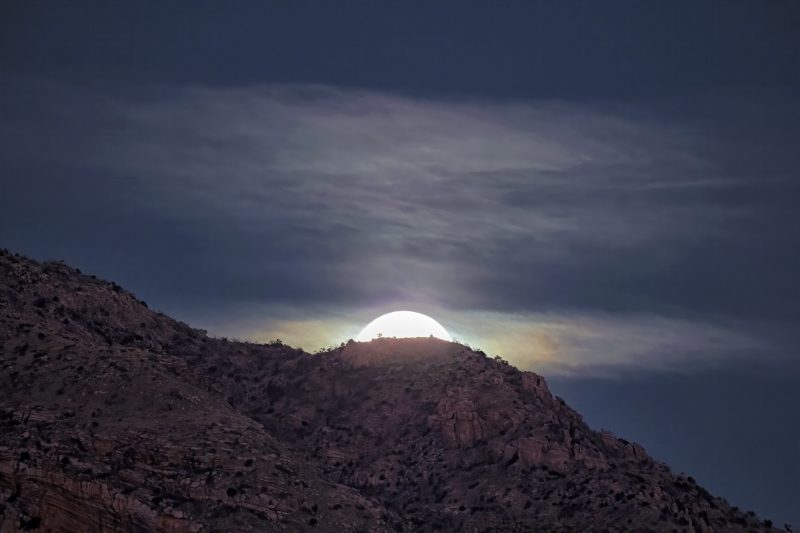From around the world these two nights – February 8 and 9, 2020 – the moon will appear full to the eye as it lights up the eastern sky after sunset. In North America, we call the February full moon the Snow Moon or Hunger Moon. As dusk turns into darkness on February 8, watch for Regulus, the brightest star in the constellation Leo the Lion, to follow the moon into the eastern sky around nightfall or early evening. Then, on February 9, note that the moon in its orbit has moved closer to the star Regulus on the sky’s dome.
Have you heard that this weekend’s full moon is a supermoon? Some sources will say it is. Others will say it isn’t. Read more: Is February’s full moon a supermoon?
Want to know which constellation lies behind the moon? Visit Heavens-Above to find out.

Depending on where you live worldwide, the moon turns full on February 8 or 9, 2020. To the eye, however, the moon will likely appear almost equally full on both nights. The full moon – by definition – occurs at the instant that the moon is 180 degrees opposite the sun in ecliptic longitude. This full moon instant occurs on February 9, at 07:33 Universal Time. At United States times, that’s February 9, at 2:33 a.m. EST, 1:33 a.m. CST, 12:33 a.m. MST – yet on February 8, at 11:33 p.m. PST, 10:33 p.m. Alaskan Time and 9:33 p.m. Hawaiian Time.
Because the moon is opposite the sun at full moon, the February full moon mimics the path of the sun six months from now, or in early August. From around the world, the August sun – like the February full moon – rises north of due east and sets north of due west. In the Northern Hemisphere, the February full moon (like the August sun) follows the high path of the summer sun and therefore stays out longer than 12 hours; yet, at temperate latitudes in the Southern Hemisphere, the February full moon (like the August sun) follows the low path of the winter sun and stays out for less than 12 hours.
In February, from around the world, the sun rises south of due east and sets south of due west. Therefore, the southern February sun gives the Northern Hemisphere less than 12 hours of sunlight, but provides more than 12 hours of sunlight to the Southern Hemisphere.
Day by day, the sun is rising and setting farther and farther northward along the horizon. Day by day, the Southern Hemisphere is slowly losing daylight while the Northern Hemisphere is gaining it. By the time the March equinox comes on March 20, 2020, the sun will rise due east and set due west, giving equal day and night around the world. After that, the sun will rise and set north of due east and west, giving the Northern Hemisphere its turn for longer and warmer days.

Bottom line: At the vicinity of full moon, the moon rises around sunset, climbs highest in the sky around midnight, and sets around sunset. This February 2020 full moon – on February 8-9 – is near the star Regulus in the constellation Leo. For us in the Northern Hemisphere, the path of this Snow Moon across our sky is a welcome reminder of the longer summer days to come.











